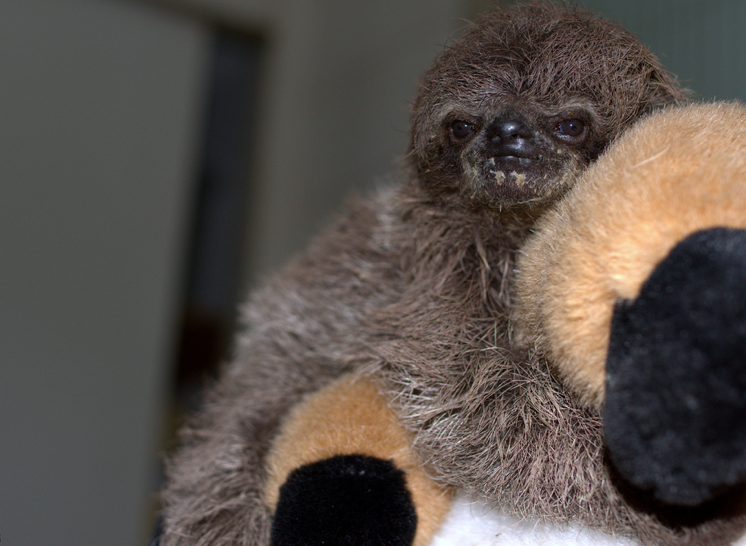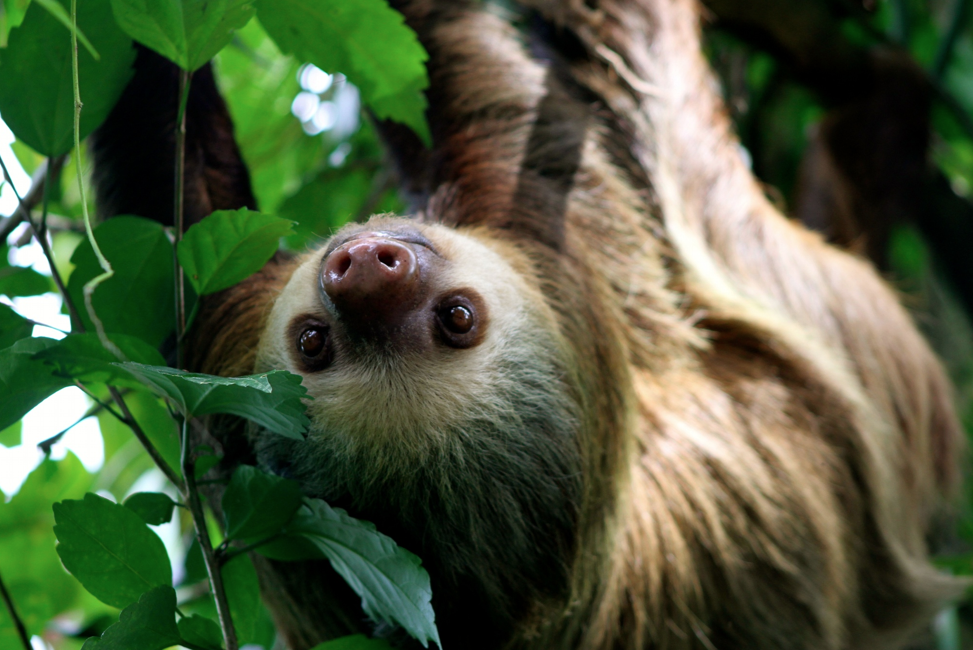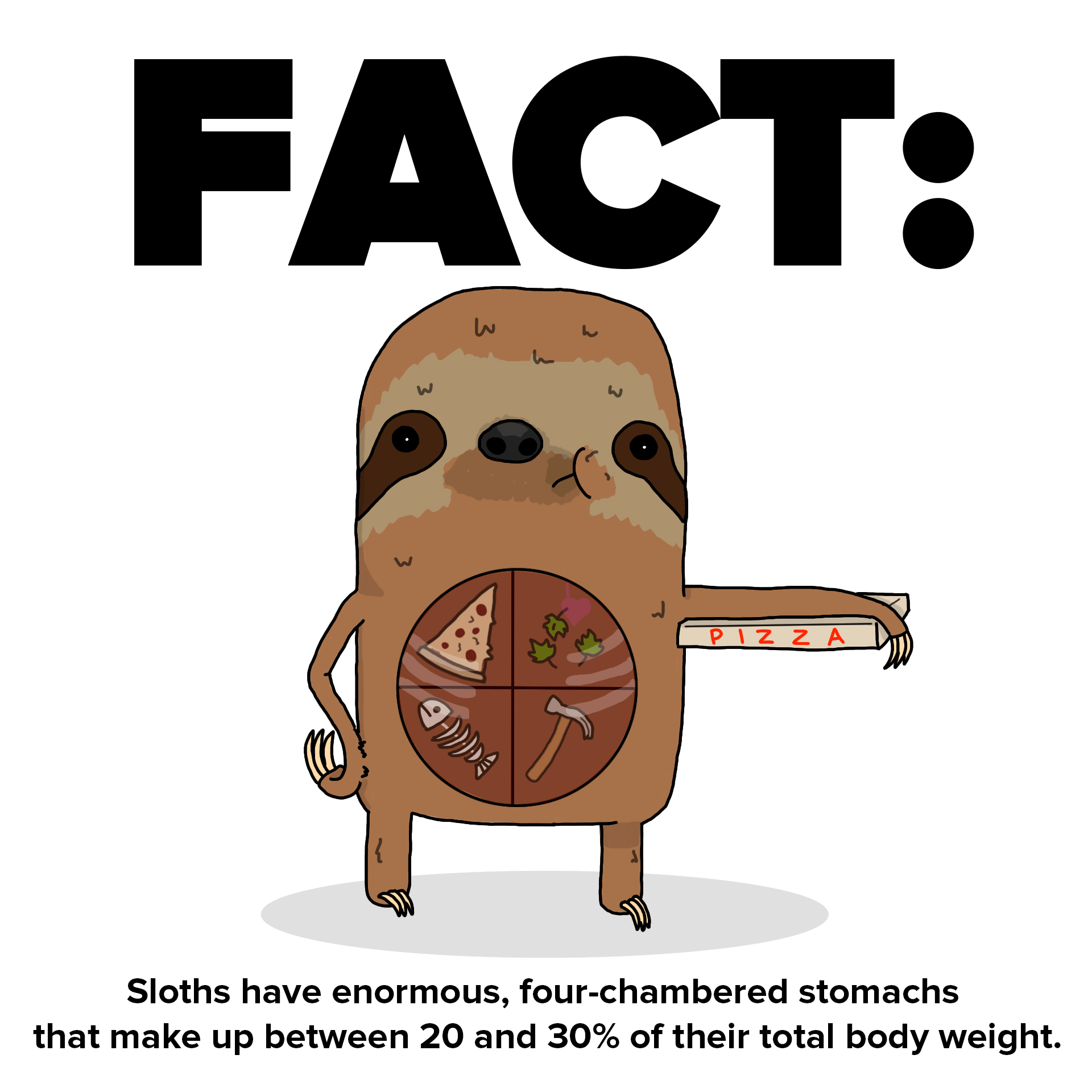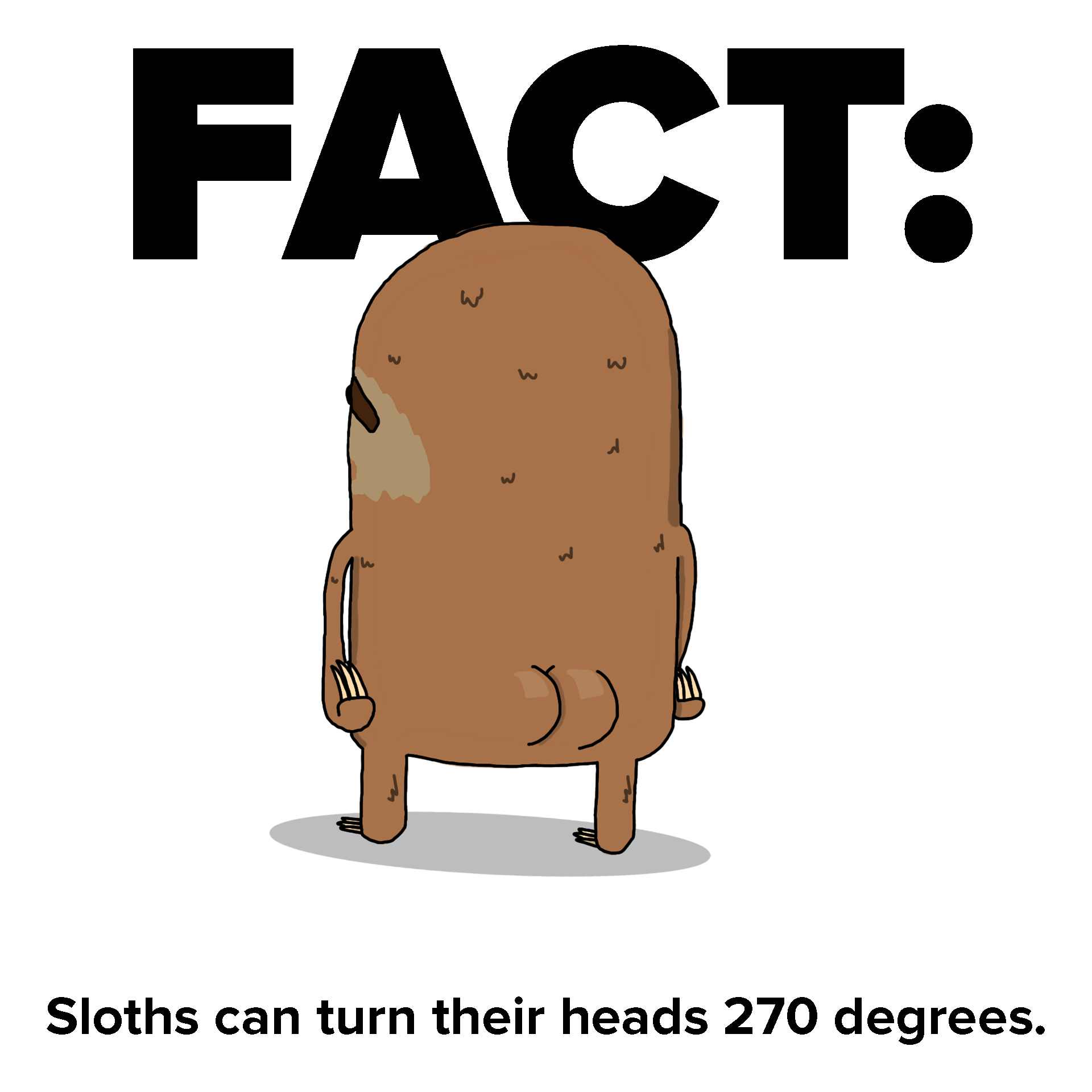This is a great educational clip and really interesting! Just watch the first half for the sloths.
Tag Archives: fact
Methane production…in sloths…
I wasn’t going to write up about this Journal article published in June, as the results basically confirm what is already known/suspected about sloths:
“These results corroborate literature reports on low intake, low defecation frequency [and] low metabolic rate…in other sloth species.”
But then this caught my attention:
“In spite of the low food intake and the low-fibre diet…methane production was rather high…”
So, turns out, sloths got gas.
Lol.
April Fool’s! Here’s some silly sloth facts
How do sloths see the world?
Ever wondered what those gorgeous dark eyes are seeing when a sloth looks out onto the world? Humans are generally trichromats; our retinas possess three types of photoreceptors for recognising colour (“cone” cells), each of which has a different absorption spectra.
Xenarthrans (sloths, armadillos and anteaters) however, are rod monochromats. This condition in humans results in colourblindness, low vision in dim light, and almost complete blindness in bright light.
A new study, published in The Royal Society Proceedings journal, used many different genetic methods to conclusively show that the Hoffmann’s two-toed sloth is a monochromat. Furthermore, they concluded that these sloths have a long history of monochromacy. Based on fossil records, this may be a result of a historically subterranean lifestyle (ground-dwelling), that preceded the arboreal lifestyle (tree-dwelling) they live today, and hence restricted their evolution due to the dim light conditions.
“We searched the genome of…Choloepus hoffmanni (Hoffmann’s two-toed sloth)…for retinal photoreceptor genes and examined them for inactivating mutations. We hypothesize that rod monochromacy…evolved as an adaptation to a subterranean habitat in the early history of Xenarthra. The presence of rod monochromacy has major implications for understanding xenarthran behavioural ecology and evolution.”
So when you look into a sloth’s eyes, what do they see when they look back at you? If it’s day time, probably a light grey, blurry figure. But let’s just pretend otherwise, shall we?
Did You Know?
A sloth can turn its head almost 180 degrees, as it has an extremely flexible neck.
From the Nature Institute in New York:
The sloth’s neck is not only unique in its flexibility, but also in its anatomy. Mammals have seven neck (cervical) vertebrae. The three-toed sloth usually has nine and the two-toed sloth has between six and nine cervical vertebrae.





